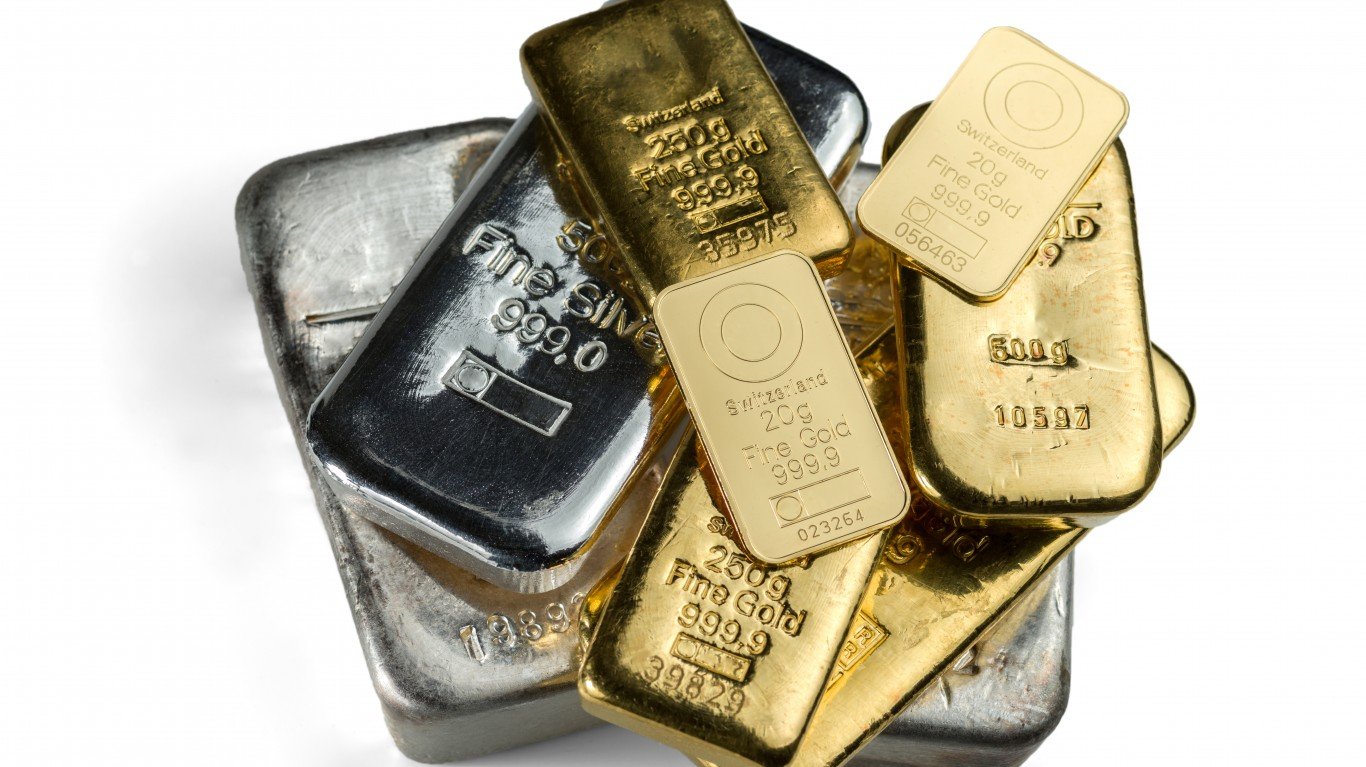

Gold and silver have been on a rampage in 2020. The uncertainties around the COVID-19 pandemic have created multiple benefits for gold. The zero interest rates in the United States are paired off with negative interest rates in Japan and Europe. Trillions of new stimulus dollars from the U.S. Federal Reserve have been followed by stimulus in Europe, China and elsewhere. It has been a perfect storm for gold, but silver’s move has only just started outpacing gold’s strong move.
Many investors and speculators are still looking for even more absolute performance ahead, despite gold having surged past the $2,000 per ounce mark and with silver having surged past the $26 per ounce level. There are many reasons to believe that these metals can go much higher, but there also are many reasons to believe that this is yet another bubble in the works.
A look into the trading history of past bubbles can offer some potential insight as to what can happen to the price of silver after the gold craze spreads into other precious metals. The size of the gold market is exponentially larger than the silver market, so any tactical rotation of assets into silver can create a much more leveraged move.
The Hunt brothers’ $1 billion-plus effort to corner the silver market in the 1970s showed that even $1 billion back then was not enough to corner the market, but today a move of $1 billion into silver will just create a much larger percentage move than $1 billion more into gold. During the silver bubble starting in 1979, silver rose from about $6 per ounce to nearly $50 — only to be back under $6 per ounce by 1982.
To show just how wide the disparity is between gold and silver in the amount of assets today, the two largest metals trusts are miles apart in assets as of the August 4 closing data. The iShares Silver Trust (NYSEARCA: SLV) is now up to $13.8 billion in assets, and the SPDR Gold Shares (NYSEARCA: GLD) had $79.9 billion in assets.
There also was a handy difference in the premiums or discounts to net asset value. The iShares Silver Trust’s premium was 6.94%, and the SPDR Gold Shares premium was 0.04%. While premiums and discounts can swing handily throughout the trading day, some of the disparity also can be due to closing time differences between metals and stocks.
The largest gold ETF versus the largest silver ETF only show a small portion of the disparity in size of silver. According to the ETFDB, the top two gold ETFs have a current $111 billion in assets, versus about $14.5 billion for the top two silver ETFs. The ETFDB also shows how much wider the disparity is between the two top silver ETFs and the size of the two top gold ETFs.
Gold hit an all-time high in U.S. dollar terms after uncertainty and as a historic hedge against inflation, but silver is nowhere close to its all-time highs. From the start of 2009 until the peak in 2011, silver’s run went from about $10 per ounce all the way up to nearly $50 in 2011. That silver bubble took less than a year to get back under $30 but it took until 2015 to get back under $15 per ounce. Since that time, silver had spent most of its time between $15 and $20 per ounce, before dipping under $13 in March of 2020 and then screaming higher to above $26 at the present time.
Bubbles can scream higher with bulls charging and bears roaring, but a recent forecast references a simultaneous buy and sell signal. In July of this year, Carter Braxton Worth tweeted something about silver’s rise after jumping from $20 to $24 in a few days. Can something be a buy and a sell at the same time? Of course. It’s all about who one is in the marketplace and one’s time frame. Silver is both, here and now.
Other strategists have been bullish on gold and silver as well. BofA Securities has talked about $3,000 gold over the next 18-month period for months now, and it just outlined how silver could reach $50 per ounce in fresh reports. A recent call from RBC Capital Markets also talked gold’s target up to $3,000, even if it warned of volatility around profit-taking being followed by new unexpected headlines driving the price back up. TD Securities has pointed out that positioning in gold is not overly stretched, but at the higher end of the range the trading action points to excessive retail speculation and momentum as likely contributors to the higher gold prices.
Sarah Kiernan, head of Americas Commodities Sales for the Goldman Sachs Global Markets Division, recently talked up gold and silver, but she noted how there are strong metrics for silver ahead. Her view is that the interest in silver is positioned somewhere between the precious metal investor interest and the real commodity. In a recent episode of The Daily Check-In with Goldman Sachs, she noted that half of silver demand is industrial, and the economic reopening with more large-scale projects has given a real bid to silver. Kiernan also noted that any switch from gold to silver can be magnified due to the gold market being eight times that of the silver market. Her ending take: “There is a lot of fundamental reasons to be bullish on silver from a true supply/demand perspective.”
One other aspect of investing in silver and gold is that the two largest gold miners have a combined $105 billion in market capitalization, but the VanEck Vectors Gold Miners ETF (NYSEARCA: GDX) now has roughly $19 billion in assets as of August 4. Many speculative miners within the VanEck Vectors Junior Gold Miners ETF (NYSEARCA: GDXJ), with about $6.9 billion in current assets, have more than doubled year to date. A fresh look at all of the gold and silver mining companies showed that it is just a lot harder to find significant upside.
The year-to-date rise of 32% in gold has now been eclipsed by a 45% rise in silver. Compared with March, silver has effectively doubled from the trough to the current price.
Investors and speculators know that bubbles form over time. How much those bubbles inflate depends on too many things to discuss in one article. There is still a debate about whether the bubble in precious metals has even formed or is just getting started.
Silver is sometimes referred to as the “poor man’s gold,” but its trading history would indicate that the other nickname of the “devil’s metal” is for more reasons than just a biblical reference. It would be easy to say that silver’s move has a long way to go if gold stays strong, but that is something for each person to decide on their own.
Sponsored: Attention Savvy Investors: Speak to 3 Financial Experts – FREE
Ever wanted an extra set of eyes on an investment you’re considering? Now you can speak with up to 3 financial experts in your area for FREE. By simply
clicking here you can begin to match with financial professionals who can help guide you through the financial decisions you’re making. And the best part? The first conversation with them is free.
Click here to match with up to 3 financial pros who would be excited to help you make financial decisions.
Thank you for reading! Have some feedback for us?
Contact the 24/7 Wall St. editorial team.
 24/7 Wall St.
24/7 Wall St.


